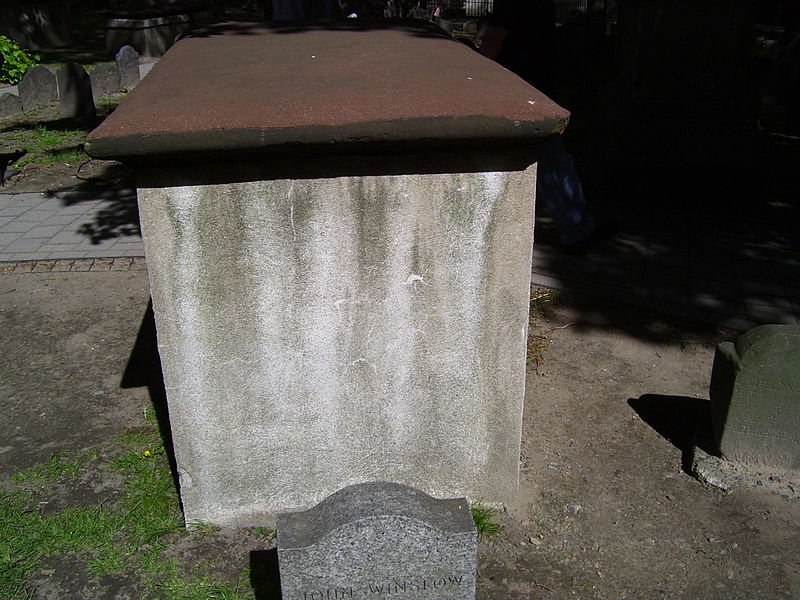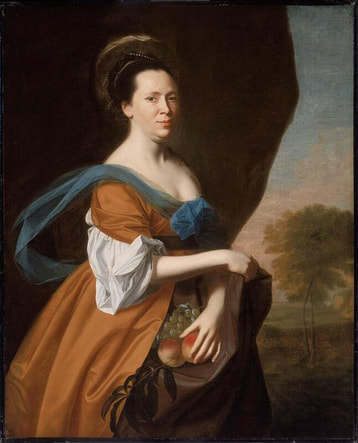KING'S CHAPEL
Stop 2: King's Chapel Burying Ground Gravestones and Tombs
While exploring the Burying Ground, check out some of the images found on the tombstones. Do you see any common images?
While exploring the Burying Ground, check out some of the images found on the tombstones. Do you see any common images?
|
Puritan Gravestone Symbols
In colonial New England, the Puritans influenced some of the famous iconography found on these 17th and 18th century tombstones. The most common is perhaps the “death head” with a winged skull, symbolizing the Puritan's belief of the soul’s departure from the body upon death.
Note that tombstones only mark that a person was buried inside this burying ground, but do not necessarily signify where they were exactly buried. Furthermore, records indicate that over a thousand white, early New England colonists were buried here, though there are only a couple hundred tombstones. |
|
Tabletop Tombs
You may have noticed that this Burying Bround - as well as at the Granary - contain some "tabletop" tombs. Wealthier families sometimes purchased an area of the burying ground and have a simple, raised tomb that looks like a table. Perhaps most notable are the tombs of the first Puritan Governor of Massachusetts John Winthrop and Mary Winslow, the first woman who allegedly stepped foot off the Mayflower is buried in the Winslow family tomb (pictured).
|
Where are King's Chapel congregants buried?
While the Burying Ground may not be the Chapel’s official burial space, there are some congregants who are interred there. Others can be found beneath the chapel in the crypt (more on that later), or at other burying grounds.
Historic Congregant Spotlight: Elizabeth Murray (1726-1785)
|
One notable King’s Chapel congregant at this Burying Ground is Elizabeth Murray, a successful 18th-century businesswoman and shopkeeper. Murray used her success to assist other women in securing economic independence at a time when unmarried women had few career opportunities. Two of her business proteges, Elizabeth and Ame Cumming, were also members of King's Chapel and described Murray as a "kind adviser."
Elizabeth Murray died on May 25, 1785 after an illness of several weeks. Married three times, she was buried next door in the King's Chapel Burying Ground, alongside her second husband, James Smith. The “tabletop” tombstone, no longer legible, included the words “To the Revered Memory of ELIZABETH the relict of James Smith, Esq. Who died the wife of Ralph Inman Esq.” Her nieces Dorothy and Elizabeth Robbins were later buried alongside Elizabeth Murray and James Smith. Learn more about Elizabeth Murray in our online exhibit "Queen's Chapel" here. |
Next: Exit the Burying Ground and head back to the front of the chapel. At the corner closest to you, you will find an obelisk memorial.
www.kings-chapel.org | 58 Tremont St. Boston, MA 02108 | 617-227-2155


